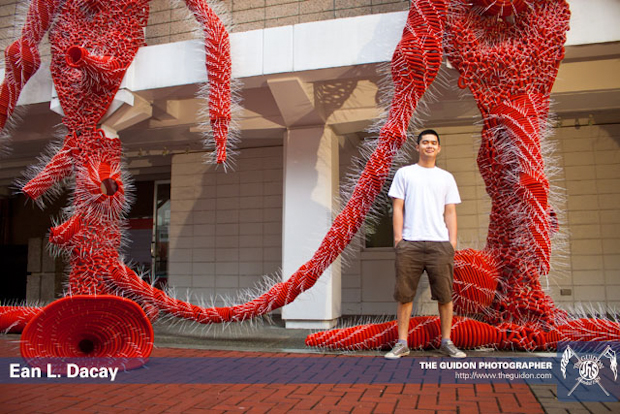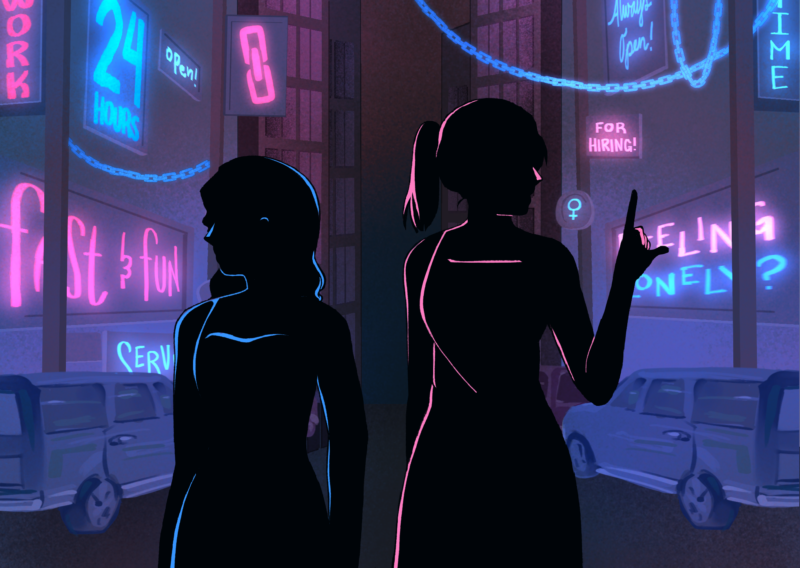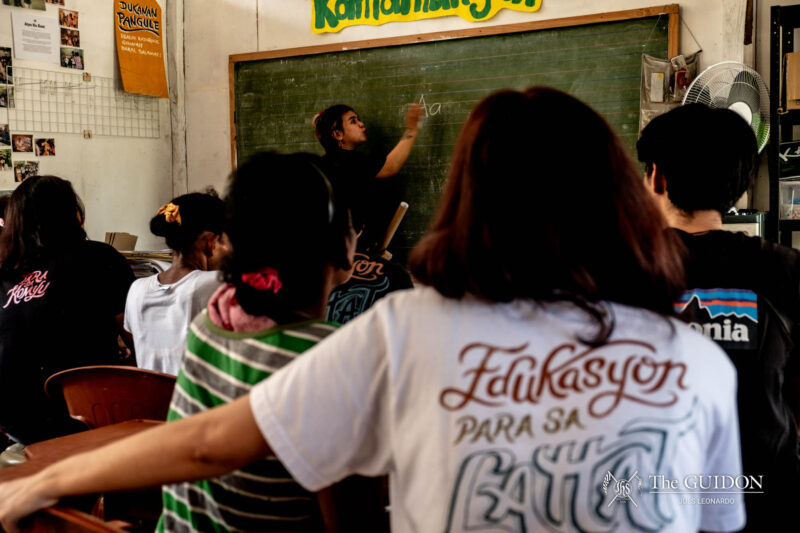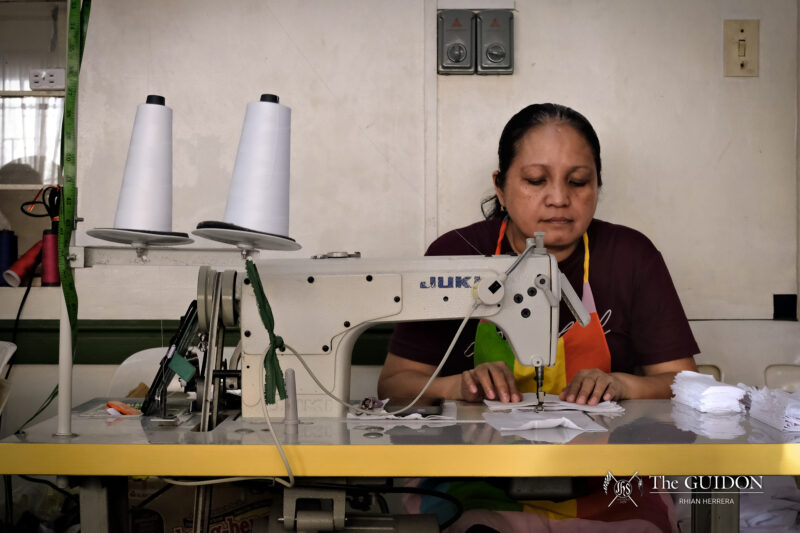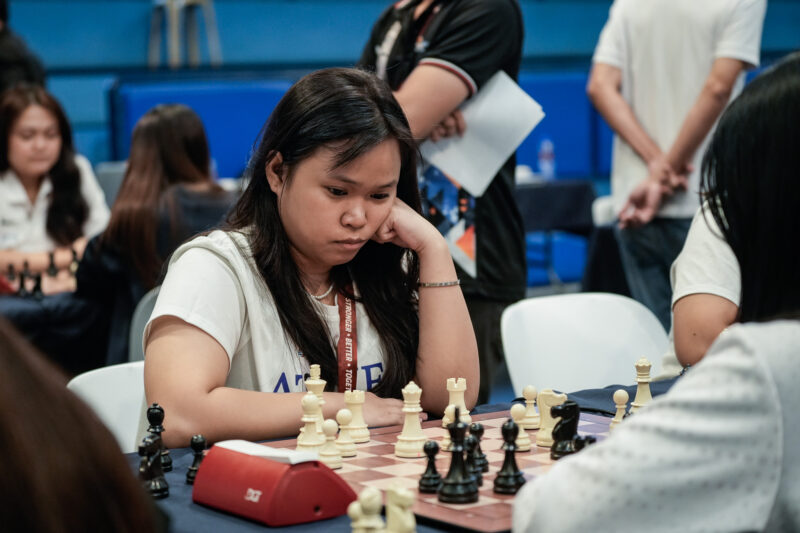The final bell had rung hours before, and the bouts of mental exhaustion have long since ended. Not a soul stirs in campus—but the red brick road is alive with spirits.
Indistinguishable white shapes appear sporadically on the façade that fronts College Lane, the stately building that had been once both bane and refuge on campus, had mutated into the haunt of specters.
As orange tubes dotted with white spikes snake around the old library’s columns—strangleholds that leech the pompousness and create a structure that’s reminiscent of all the science fiction films you’ve ever watched. It’s a wonder why the campus didn’t come to a standstill at its inception.
When the new Rizal Library was christened, its predecessor became a stoic front; devoid of the rush of research and academics, its prominence faded on campus. Ateneo Art Awardee Jan Leeroy New stepped in and claimed the blank slate for his Balete exhibit.
Balete
For those too transfixed to read the text, that mass of orange tubes and white spikes mimic a balete tree with its twisting limbs and grasps.
The young artist creates an interesting juxtaposition with his Balete exhibit. On the surface, the exhibit is clearly influenced by science fiction, but it is inherently a manifestation of an ancient, local belief. “What you have is something like a marriage [of classical and modern sensibilities],”Leeroy says. “It’s an attempt to participate in the race for the future.”
Though not all viewers might delve into the contrasting parallelisms of the Balete, IC Jaucian, the Ateneo Art Gallery’s Project Coordinator, commends the exhibit. “The viewer can have different levels of appreciation,” says IC. “The artwork could be equally effective with just an individual reacting to the space.”
Leeroy’s fascination with science fiction is his most distinctive trait. His collaborations with Kermit Tesoro during the Philippine Fashion Week, and Mitch Dulce’s send-off exhibit had Leeroy’s exclusive prints all over them. His brother and fellow budding artist, Casey, says, “Art gives out the idea of what the person is because everything the person is shows through his art.”
Teratoma II: War of the Worlds
The Balete isn’t Leeroy’s first exhibit on the old library’s exterior. Late last year, a metal alien perched on a corner of the building’s ledge, elicited more than a few raised eyebrows. Fresh off the move from old to new Rizal Library, Ateneans were only all the more curious about this change. “It’s part of doing public work,” says Leeroy. “The content of the place will affect the content of your work.”
True enough, that one alien is actually a piece of a much bigger art installation—Teratoma II: War of the Worlds exhibited in Singapore. This exhibit—and incidentally, Leeroy’s winning exhibit, is another study of contrast; the outlandish Teratoma II—Martian figures against a UFO backdrop—was installed on Singapore’s city hall. “I kind of played with the classical elements of the building versus the modern UFO-like structure over at the other building,” explains Leeroy.
Graphic designer Dan Matutina remarks in Filipino, “Leeroy chose a location that was supposedly normal, but he had an alien structure and an alien design.”
It’s a clear intervention of public space: imagine walking by the unchangeable Faura and seeing a mural painted on it. “That’s a big chunk of what’s Leeroy trying to do,” says IC, “intervene with a space and see how the public reacts to it.” Art just isn’t the same outside its ‘natural setting’—a gallery for instance—since according to Leeroy, “it almost becomes public property.”
It’s safe to say that Leeroy goes against the grain. When other artists would want their works under glass cases, Leeroy has his works exposed to the sun, rain, and the probing hands of viewers; when other artists would want to work on small-scale exhibits and house them in intimidating museums, Leeroy works on a grander scale and installs his exhibits in places where his audience is at ease with the setting.
Corpo royale
Leeroy isn’t a one-note or one-themed artist, though. He might favor science fiction, but from time to time, he reunites with more classic concepts. “This sci-fi mythology has [just] come to replace ancient mythology,” Leeroy states.
His reconciliation with ancient beliefs comes alive in Corpo Royale. Leeroy plays with religion this time, with his statue of the Virgin Mary (Mother of Pearls) covered in pearl-like beads and that of an infant Jesus (Leche) enveloped in teeth. Take it as playful or rebellious – Leeroy maintains that he “only makes the conditions for these reactions… to create the occasion for discourse.”
His art might not be for everyone, but what he does has been definitely getting attention; as he’s been nominated once again for the Ateneo Art Awards, this time for his religiously-inclined Corpo Royale. “Leeroy’s works are really for collectors since they’re hard to display,” remarks Dan in Filipino. “But a lot of people still buy his work.”
A collection of oddities
When it comes to Leeroy, the word ‘artist’ gets thrown around a lot—but really, he’s dabbled in more than one kind of art. He’s danced with fashion, and designed for film—Leeroy’s currently the production designer of Dagim—and worked with figures. “It’s not about the particular medium, but the sensibilities you use when using these mediums,” Leeroy declares. “Some would work very dependent on the materials they use, but… it’s easy for me to adapt.”
Simply put, he is an artist who’s ventured into the different territories of the art world. And despite working very closely with matters that transcend the present, there’s no chance of the artist floating away from Earth. “We’re ordinary people!” Leeroy states.
Perhaps Leeroy’s got his eyes set on even bolder and grander scales, and with him, it isn’t an improbable hunch, but rather just a looming certainty. He may count himself as ordinary, but what of his vision? Well, it’s out of this world.
WHAT’S THAT ORANGE THING?
You know what I’m talking about – the violently orange coils of plastic that seem to have grown on the façade of the old Rizal Library. Today, Ateneans take a guess at what Leeroy New’s Balete is supposed to be.
“I think it’s this weird giant mutant centipede thing. Those white things sticking out of the orange thing kind of reminded me of insect legs…lots of insect legs.”
–Nico Nuyda (III AB Psy)
“[It’s] some sort of alien that can suck stuff.”
–Carlo Chong (IV AB Comm)
“It’s either a mutated octopus or a really fuzzy, itchy coral…but I have friends who said it was a vagina.”
–Joni Yap (III AB Comm)
Actually, the peculiar sculpture is a representation of the mystical balete tree, which can grow to immense sizes and engulf existing structures. But don’t feel bad if you think you got it wrong. Leeroy New himself says, “Different individuals take in what they want from the work … I only make the conditions to create these reactions, to intervene and disrupt the routine of the students, and to create the occasion for discourse between the space, the audience, and the work.”
Judging from the students’ reactions, he was able to do just that.


